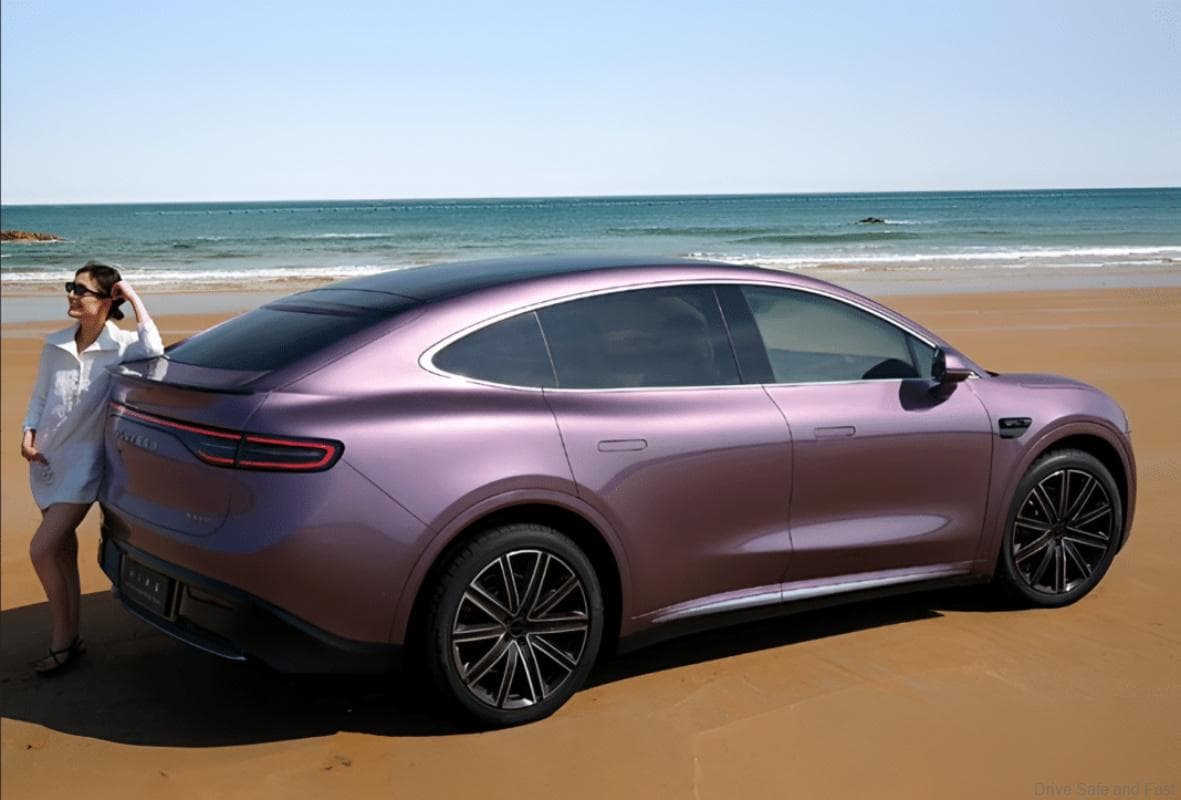Its official, it seems that Luxeed is the newest Chinese EV brand to show up
The Luxeed R7, the result of a collaboration between Chery and Huawei through the Harmony Intelligent Mobility Alliance (HIMA), has made a remarkable debut in the automotive market. In just 33 days, it has amassed over 30,000 non-refundable orders, highlighting its strong appeal.

As the first electric coupe SUV from HIMA and Luxeed’s second offering after the S7 sedan, the R7 experienced a phenomenal response, receiving more than 6,000 orders within its first 24 hours and surpassing the 20,000 mark within two weeks. It measures 4,956 mm in length, 1,981 mm in width, and 1,634 mm in height, boasting a generous wheelbase of 2,950 mm.
Moreover, its sleek “One-Box” design incorporates a 192-line lidar system mounted on the roof. Buyers can choose from an array of six striking colours: Phantom Purple, Sunlight Blue, Ceramic White, Deep Space Gray, Gilded Black, and Metropolitan Red. With a drag coefficient of just 0.219, the R7 ranks among the most aerodynamic SUVs currently available.

It offers both rear-wheel drive (RWD) and all-wheel drive (AWD) options, powered by a 215 kW motor for RWD and a dual-motor setup generating 365 kW for AWD. This allows the vehicle to accelerate from 0 to 100 km/h in an impressive 3.9 seconds. Built on an 800V platform, the R7 can recharge enough to provide a 400 km range in just 15 minutes.
Inside, the R7 is also equipped with Huawei’s HarmonyOS 4, a 12.3-inch driver display, and a 15.6-inch central touchscreen. It features various interior colour options, including White Sand Apricot and Truffle Brown. Cargo capacity is another highlight, offering 837 litres of space, the Luxeed R7 is as versatile as any other car.
On top of that, the R7’s Pro version boasts a range of up to 667km, while the Max and Ultra versions, equipped with a 100 kWh battery, achieve ranges of 802km and 736km, respectively, according to CLTC standards. Built on the TuLing platform, the R7 features intelligent vehicle state perception (iVSE) to adapt to various road conditions.

The Pro trim comes standard with Huawei’s QianKun ADS 3.0 driving assistance, while the Max and Ultra models offer lidar-based assistance. Additionally, the R7 is equipped with variable damping and air suspensions, along with advanced double-wishbone front and multi-link rear suspensions.
Its adaptive downhill cruise control and energy recuperation systems minimise brake usage, reportedly requiring less intervention than competitors like the Tesla Model Y and BMW X6. Deliveries for the Max and Ultra trims began on October 15, with the Pro model set to launch on November 15, marking an exciting development in the electric SUV landscape.

We got all this from CarNewsChina and their full article is linked here. Thank you CarNewsChina for the information and images.